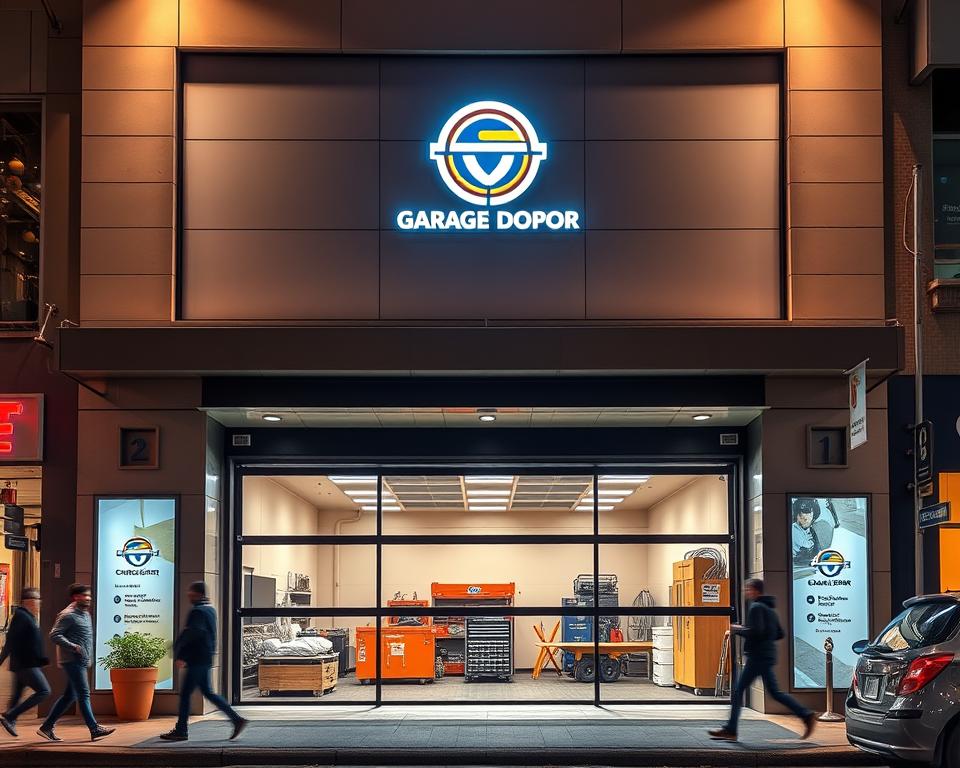Specialist Digital Marketing 1on1 SEO by Marketing1on1
You may not know this, but 90% of internet interactions begin via search engines? Differentiating yourself in search results isn’t merely helpful—it’s crucial. This is when Marketing1on1 comes into play. Beginning in 2010, the New York-based agency has helped small businesses enhance their online presence using customized plans.
Differing from standard firms, Marketing1on1 takes a practical approach. Their Digital Marketing 1on1 SEO coaching structure merges skilled direction plus immediate modifications. Customers enjoy results—such as doubled natural visits—minus prolonged agreements. A transparent dashboard makes progress apparent at every stage.
This scientific approaches evolve to trends, securing enduring results. Be it launching your search engine optimization journey or enhancing it, they offer quantifiable growth. No guesswork, only proven strategies.
Principal Conclusions
- Marketing1on1 has over ten years in expertise enhancing search rankings.
- This custom strategies center on real, tangible successes.
- Customers enjoy adaptable, no-contract services providing complete openness.
- A scientific approach distinguishes them from typical companies.
- Their own control panel records development, guaranteeing traceability.
What Is Digital Marketing 1on1 SEO?
Conventional strategies rarely work in the modern market. Distinguishing yourself demands a plan designed for your business goals—instead of a generic model. That’s the core of personalized SEO mentoring: tailor-made plans which evolve with your growth.
Customized SEO Methods
Instead of pre-packaged solutions, specialists analyze your site’s architecture and content deficiencies. Weekly reviews measure improvement using proprietary tools. Such a cyclical method combines technical fixes alongside content optimized for people to ensure long-term benefits.
Bruce Jones, a 20-year SEO veteran, guides workshops including implementable tasks. Clients implement changes immediately, accelerating results. Client feedback underscores that his practical approach transforms concepts into quantifiable improvements.
How It Differs from Traditional SEO
Typical companies present standardized bundles. 1on1 training adjusts every strategy—ranging from keyword discovery to link building—suited for your clientele. Conventional approaches commonly dismiss individual obstacles, including regional contests or niche sectors.
Here’s the difference: as competitors speculate, our method is data-driven. Personalized control panels show real-time rankings and traffic shifts. Contract-free services afford adaptability, and open data keeps you informed at all times.
Why Small Businesses Need Digital Marketing 1on1 SEO
Local companies commonly face difficulties in distinguishing themselves against bigger competitors. Limited budgets and resources render it difficult to gain visibility online. Personalized plans fill this void, converting regional visibility into superiority.
Challenging Big Brands
Large-scale enterprises control digital outcomes through enormous advertising budgets. But smart tactics like local listings and niche keywords help smaller companies carve their space. An analysis revealed a 150% increase in returns over six months through concentrating on ultra-specific demographics.
Budget-Friendly Development Techniques
Conventional agency fees deplete funds via non-negotiable contracts. Versatile, per-service payment structures eliminate middleman fees. Simply refining your Google Business Profile can boost local traffic—without needing a large budget.
-
Budget-friendly: No upfront costs, pay solely based on proven outcomes.
-
Community-centric: Excel over big names in neighborhood queries.
-
Transparency: Live interfaces monitor every metric without uncertainty.
Essential SEO Methods to Elevate Your Visibility
Improving SERP positions demands more than just guesswork systematic accuracy and innovative methods. Here are tried-and-tested approaches to elevate your visibility and drive targeted traffic.

Keyword Analysis to Attract Specific Traffic
Initiate by employing keyword clustering—a technique that categorizes similar phrases. Tools like Ahrefs identify keywords that are popular yet underutilized. For example, an oven-based business could concentrate on “gluten-free cupcakes near me” instead of standard dessert descriptors.
-
Cluster themes: Organize phrases based on purpose (e.g., “buy” versus “learn”).
-
Regionalize: Incorporate area-specific terms for community reach.
-
Follow keyword shifts: Refresh keywords every three months for ongoing relevance.
In-Page SEO Methods
Header tags and meta details need polish. A client’s “Best Running Shoes” page experienced a 40% click increase upon being reworked to “Top Cushioned Running Shoes for Marathon Training 2024.”
Additional improvements comprise:
- Section headings reflecting search intents.
- Embedded links facilitating navigation for both users and search engines.
- Picture descriptions enriched with relevant terms.
Establishing Authoritative Backlinks
Curated links from authoritative domains indicate credibility. A tech blog earned links by publishing expert roundups with industry leaders. The emphasis is on contextual relevance rather than sheer numbers.
Focus on:
- Invited content on focused blogs.
- Identifying and replacing defunct links with your own material.
- Partnerships with nearby enterprises to exchange links.
How Content Optimization Drives Results
Great content isn’t just about words—it’s about strategy. An optimal mix of reader-friendly language and technical accuracy captures both users and algorithmic favor. Marketing1on1 creates content optimized for search without compromising your brand’s personality.
Creating Content for Search Engines
Effective content strategies commence with proper structuring. A fitness client’s blog saw a 30% traffic boost after reshaping articles with:
-
User-friendly headings: Subheaders like “5 Protein Shake Recipes for Post-Workout Recovery” reflect user needs.
-
Organic insertion of keywords: Terms like “organic protein powder” appear in introductions and subheadings, not stuffed.
-
Semantic keyword clustering: Related terms (e.g., “muscle recovery,” “vegan protein”) signal topic depth to algorithms.
Balancing Readability and Keyword Density
Applications such as Hemingway Editor maintain textual clarity, one bakery enhanced its conversion rate by 20% following sentence simplification and bullet integration.
Key recommendations involve:
-
Optimal word count: 1,200–1,500 words for competitive niches, 800–1,000 for local services.
-
Revitalizing previous articles: A tech blog updated 10 outdated guides, lifting rankings by 15% in 60 days.
-
Ease-of-read metrics: Target a Flesch-Kincaid score corresponding to Grade 8–9 for maximum accessibility.
The Importance of Technical SEO in Driving Success
Behind every high-ranking website lies a solid technical foundation. Search engines prioritize sites that load quickly, display properly on all devices, and use structured data effectively. Neglecting these factors may render your site unseen, regardless of content quality.
Page Load and Mobile Responsiveness
Slow-loading pages frustrate users and hurt rankings. An analysis demonstrated a 40% decrease in bounce rates once Core Web Vitals were enhanced. Key steps include:
-
Evaluate site speed: Use tools like PageSpeed Insights to identify bottlenecks.
-
Check mobile adaptability: Ensure buttons and text adapt to smaller screens.
-
Compress images: Reduce file sizes without sacrificing quality.
Structured Data and Schema Markup
Organized data enables search engines to parse your material better. For example, adding product schema can highlight prices and reviews in results. Optimal techniques:
- Use JSON-LD for critical pages such as events and recipes.
- Use XML sitemaps to guide crawlers on large sites.
- Revise schema markup every three months to meet current standards.
Maximizing Local SEO for Neighborhood Engagement
If local users are looking for services, your company ought to appear first. *Local SEO* guarantees placement in “(near me)” searches that generate visits. Marketing1on1’s New York patrons frequently achieve top three positions in local searches—validating ultra-targeted approaches.
Kick off by securing and enhancing your *Google Business Profile*. Regularity matters—ensure your name, address, and phone number (NAP) match across all directories. A bakery client doubled its visibility by fixing mismatched listings on Yelp and TripAdvisor.
Reviews build trust and rankings. Encourage happy customers to leave feedback on your profile. One dining establishment experienced a 300% surge in visitors following a review initiative paired with follow-up messages.
Target *geo-modified keywords* like “emergency plumber in Austin” or “vegan catering Boston”—terms that draw in immediate local consumers. Combine these with *community content hubs*—articles like “Best Parks in Dallas for Family Picnics” enhance local SEO signals.
Local citations and service-area pages further boost *community reach*. A roofing company expanded its leads by creating neighborhood-specific landing pages. Each aspect—from structured data to responsive design—ensures your company leads in local SEO.
Why Partner with Marketing1on1 for Your SEO Path
Achieving top rankings demands more than chance—it requires established proficiency. Armed with more than 15 years of expertise, Marketing1on1 has supported enterprises in succeeding despite search engine changes. Their approach blends deep knowledge with a commitment to transparency, so that customers witness tangible advancements.
Decades of Industry Experience
Since 2010, this firm has kept pace with all pivotal search engine revisions. Customers gain from insights acquired across sectors ranging from neighborhood bakeries to technology startups. They enjoy a client retention rate 35% above the norm, demonstrating enduring performance.
Major accomplishments feature:
- Conquering Panda and Penguin updates to secure client standings.
- Leading the way with mobile-first approaches ahead of the curve.
- Expanding hyper-targeted methods for regional companies.
Open, No-Contract Solutions
No long-term contracts mean flexibility. Customers are billed solely based on tangible results, accompanied by lucid dashboards monitoring all key figures. A roofing business optimized keywords in real time, resulting in a 50% lead surge within three months.
Your search journey deserves a partner who prioritizes your growth—not rigid templates. With expertise and openness, Marketing1on1 turns challenges into victories.
Marketing1on1’s Exclusive One-on-One SEO Coaching Model
Where many coaching programs complicate instead of clarify—discover an alternative. Unlike pre-recorded courses, Marketing1on1’s 1on1 seo training connects you with specialists to tackle problems on the spot. Every lesson is tailored to *your* website’s needs, turning theory into measurable growth.
Practical Coaching with Industry Veterans
Led by Bruce Jones, a two-decade SEO expert, sessions are oriented around *your* obstacles. Regular sessions feature shared screens for live problem resolution. Clients rave about the clarity—no jargon, just actionable fixes.
Key features include:
-
Personalized competency evaluations: Pinpoint weaknesses before formulating your approach.
-
Certification program: Gain certifications through the acquisition of essential skills.
-
Progress verifications: Review performance via mutual progress reports.
Practical Assignments with Quick Results
Forget busywork—assignments like optimizing title tags or auditing backlinks drive instant improvements. A recent client applied Bruce’s on-page checklist and saw a 25% traffic jump in two weeks.
Such tasks feature:
- Geographic keyword allocation for location-specific pages.
- Broken link reports to prioritize quick wins.
- Regular content update timetables.
This approach abandons passive lectures in favor of collaborative, hands-on effort. When training results in better SEO, success is shared by all.
Proven Outcomes from Satisfied Marketing1on1 Customers
Evidence abounds: companies that redefined their online identity. From e-commerce stores to local services, the *results* speak for themselves. Discover a *case study* and direct *testimonials* that underline significant growth.
Example: Organic Traffic Doubled
A Midwest e-commerce client struggled with visibility. Following the adoption of focused keyword strategies and technical enhancements, their *visits* increased by 212% within half a year. Key wins included:
- Refined item pages with regional terms.
- Editorial backlinks from niche blogs.
- Regular updates to keep search positions stable.
Client Praise and Success Feedback
Julia Lamb, a boutique owner, shared: According to boutique owner Julia Lamb: “Their expertise transformed our site into a lead powerhouse—97% more inquiries over 90 days.” Restaurateur Rosemary Hood remarked: “Ultimately, a team that keeps its word. Our footfall tripled after applying local SEO improvements.”
Side-by-side performance charts demonstrate continual improvement. Users enjoy the benefits of a referral initiative that fosters shared progress. Authentic methods, genuine *outcomes*—nothing superficial.
Begin Your SEO Adventure Now
Initiating improved search positions begins with assessing your current status. A complimentary *audit* uncovers strategic deficiencies—such as sluggish pages or absent keywords—allowing for rapid corrections. Subsequently, a defined *plan* directs actions with clarity and trackability.
Reviewing Your Current SEO Performance
Start by conducting a site *audit* to uncover technical flaws. Software like Screaming Frog helps locate malfunctioning links and replication issues. Then, analyze your rivals to pinpoint deficiencies in content or link profiles.
Key steps include:
-
Kickoff checklist: Monitor development right from the start.
-
Competitor analysis: See what’s working for others in your niche.
-
Fast-track fixes: Prioritize corrections in meta descriptions or alt attributes.
Establishing Achievable Growth Objectives
Steer clear of imprecise aims such as “increase traffic”—opt for measurable objectives like “boost organic visits by 20% within 3 months”. Use the SMART framework (Specific, Measurable, Achievable, Relevant, Time-bound) to stay on track.
Rank actions through a task matrix:
-
Short-term: Optimize 10 product pages this month.
-
Long-term: Establish 5 authoritative links every quarter.
-
Synergy: Coordinate with your email and social media strategies.
Armed with a strategy and proper instruments, your *SEO kickoff* evolves from uncertainty to advancement.
Typical SEO Errors and How to Prevent Them
Tiny errors may undermine your SEO efforts—this is how you correct them. Many businesses unknowingly sabotage their progress with *mobile usability* gaps or inconsistent business details. Marketing1on1 identifies these issues early, turning weaknesses into wins.
Neglecting Mobile Responsiveness
Due to Google’s *mobile-first approach*, your website needs to perform impeccably on mobile devices. Slow speeds or cramped menus frustrate visitors and trigger penalties. An analysis revealed a 40% decrease in bounce rates once:
-
Fluid design: Ensure that interactive features and text function properly on every screen.
-
Fundamental performance metrics: Optimize metrics like Largest Contentful Paint.
-
Reducing image sizes: Reduce file sizes without losing clarity.
Neglecting Local Directory Consistency
Inconsistent *local listings* confuse search engines. A plumber lost 50% of leads because his address varied across directories. Marketing1on1’s audit process covers:
-
Uniformity in NAP details: Ensure your NAP information is identical across all sites.
-
Duplicate cleanup: Consolidate or discard obsolete listings.
-
Feedback oversight: Encourage customer feedback to boost trust.
Other pitfalls include *keyword cannibalization* (self-competition among pages) along with sparse text. Ongoing reviews ensure your plan stays effective—eschewing assumptions for progress.
What Lies Ahead in SEO and Digital Marketing
The search environment is changing more rapidly than at any previous time. To stay competitive, businesses must anticipate shifts—from *algorithm changes* to emerging technologies.
Adjusting to Evolving Algorithms
Google’s *AI-powered search* now prioritizes natural language and user intent. Standards like E-E-A-T give preference to detailed, reliable material. Here’s how to adapt:
-
Emphasize E-E-A-T elements: Display qualifications and testimonials.
-
Tailor content for direct answer results: Answer questions concisely in featured snippets.
-
Keep an Eye on Algorithm Shifts: Adjust strategies based on traffic fluctuations.
New Directions for 2024
Video and voice search are reshaping how audiences find information. Implementing a *video SEO* approach, for instance by refining YouTube tags and descriptions, may secure up to 50% additional visitors. Additional noteworthy shifts:
-
Voice search optimization: Concentrate on colloquial search terms (such as “best Italian restaurant near me”).
-
Dynamic Online Experiences: Interactive elements such as quizzes and surveys enhance user interaction.
-
Community-Centric Indexing: Area-specific content gains an edge over national-level pages.
Staying ahead means embracing these shifts—not reacting to them. Partnering effectively means your approach develops in sync with search changes.
Cost-Effective SEO Solutions by Marketing1on1
Budget-friendly options put powerful tools within reach for small businesses. In contrast to firms with inflated costs, our model offers straightforward benefits without extra charges. Each investment is dedicated to achieving tangible improvements.
Personalized SEO Packages for Diverse Goals
Generic packages typically fall short. Our structured *plans* are flexible to meet both your ambitions and budget constraints. As an illustration:
-
Beginner Level: Best suited for small enterprises needing essential tweaks.
-
Growth Tier: Features enhanced link-building and comprehensive content strategies.
-
Advanced Level: Comprehensive strategies for competitive industries.
Need flexibility? Include extra options like guest contributions or technical reviews. Customers appreciate the autonomy—invest solely in desired services.
Honest Pricing, No Surprises
Unseen costs damage confidence. Our pricing is based on a single, clear fee with pre-disclosed quotes. One customer reduced expenses by 30% after opting for our on-demand plan over a retainer.
Key benefits include:
-
Clear agreements: No hidden clauses or recurring fees.
-
Regular evaluations: Adjust services based on results.
-
Onboarding checklist: Track progress from day one.
Budget-friendly options can still be top-notch. With direct service delivery, you get expert help without the overhead.
Enhancing Your Online Image through SEO
Your web image sets the tone for customer interactions before a visit. Search results act as a first impression—positive *reviews* and accurate listings build *trust*, while inconsistencies raise red flags.
Start with a *review generation playbook*. Encourage happy customers to leave feedback on Google and niche platforms. A local bakery boosted its visibility by 40% after adding review prompts to receipts and follow-up emails.
Monitor your *brand SERP* (search engine results page) via monitoring tools like Google Alerts for brand mentions. Ensuring you address misinformation quickly. For example, a tech company corrected a false product claim before it spread, preserving credibility.
Credible references such as Wikipedia or official press statements confer authenticity. An analysis revealed a 25% traffic uplift after obtaining a well-sourced Wikipedia citation. Press releases distributed through reputable wires further amplify your message.
Crisis management protocols are essential. When harmful information surfaces, neutralize it with current, optimized posts. A customer mitigated a negative blog entry through professional counterarguments and supportive testimonials.
Each digital encounter molds your online image. Through active SEO management, you steer the story—cultivating *trust* with every result.
How to Measure Your SEO Success
Data-driven decisions start with accurate measurement. Neglecting proper analytics may cause even excellent tactics to falter. Instant analytics transform raw numbers into concrete actions.
Tracking Keyword Rankings
Real-time interfaces reveal constant shifts in keyword standings. Target keywords with strong intent that boost traffic. As an illustration, a plumbing service may monitor “24-hour emergency plumber near me” rather than broad terms.
Recommended techniques comprise:
-
Regular ranking reviews: Detect changes before rivals notice.
-
Sort search terms based on intent: Segment queries into informative and buying categories.
-
Modify tactics based on user engagement: Should click rates drop, improve your descriptions.
Evaluating Visitor Data and Conversions
Relying solely on organic visits does not ensure achievement. Examine conversions—such as contact form entries or phone calls—to assess returns. A decrease in bounce rates by 20% could indicate improved content relevance.
Critical data points to track consist of:
-
Attribution models: See which pages drive the most leads.
-
On-site duration: Prolonged user sessions typically reflect increased interest.
-
Backlink growth: Strong backlink profiles enhance site authority.
Defined metrics will show what is successful and highlight areas for enhancement.
Final Thoughts
Your search for lasting online growth ends here. Marketing1on1 integrates deep skill with absolute clarity, achieving tangible results designed for your objectives. From local dominance to national visibility, their strategies adapt as you grow.
Major benefits encompass:
- Reliable strategies that adapt to algorithm shifts.
- Adaptable, no-contract services aimed at return on investment.
- Live dashboards tracking every milestone.
Prepared to revolutionize your search presence? Claim your free audit today and see where opportunities lie. Award-winning support ensures you’re never alone on this journey.
With definitive results and persistent support, victory is not only feasible but certain.










